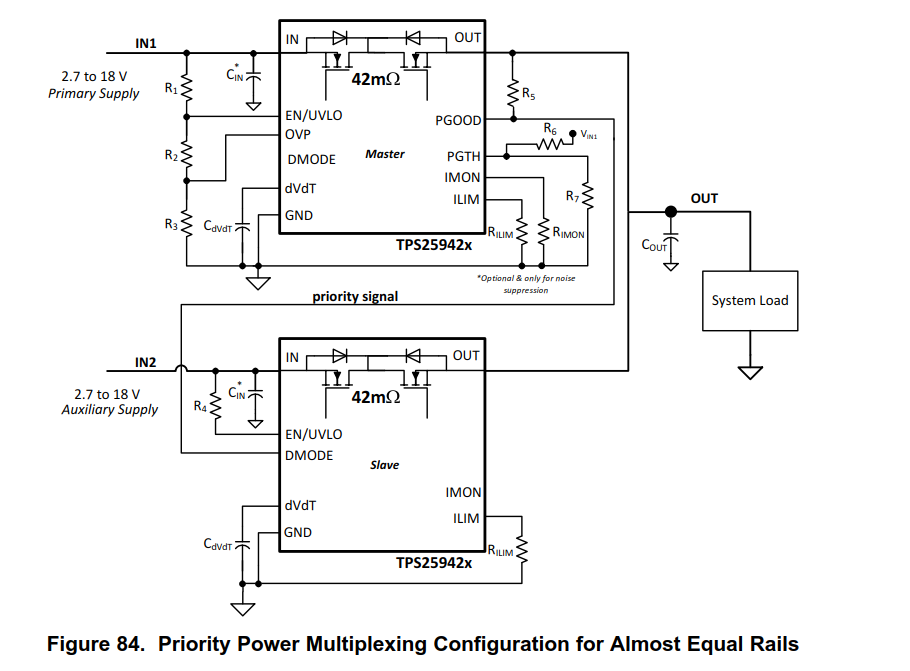I have read the datasheet and the Application note slva811. My application is power muxing with priority similar to what is shown in Figure 84 of the datasheet. I have selected this mode in an attempt to work around the bug where the tps25942 need 238mA reverse current before blocking the internal mosfet.
In Figure 84, the signal PGOOD is used to switch priorities to the slave when the Primary supply fails. That is true when IN1 falls down to 2.3v. But when IN1 reach 0v, the master TPS25942 has no more power to drive PGOOD low, and the pull-up resistor will bring PGOOD high, and also the DMODE pin of the slave TPS25942. Am I wrong? Is it possible that the TPS25952 can be powered by its OUT pin too so it would be able to drive PGOOD low even when V(IN)=0?
Do you have other devices which are better at implementing true ideal diode and that do not have 238mA back current before switching OFF?
Thanks for your help
GV



